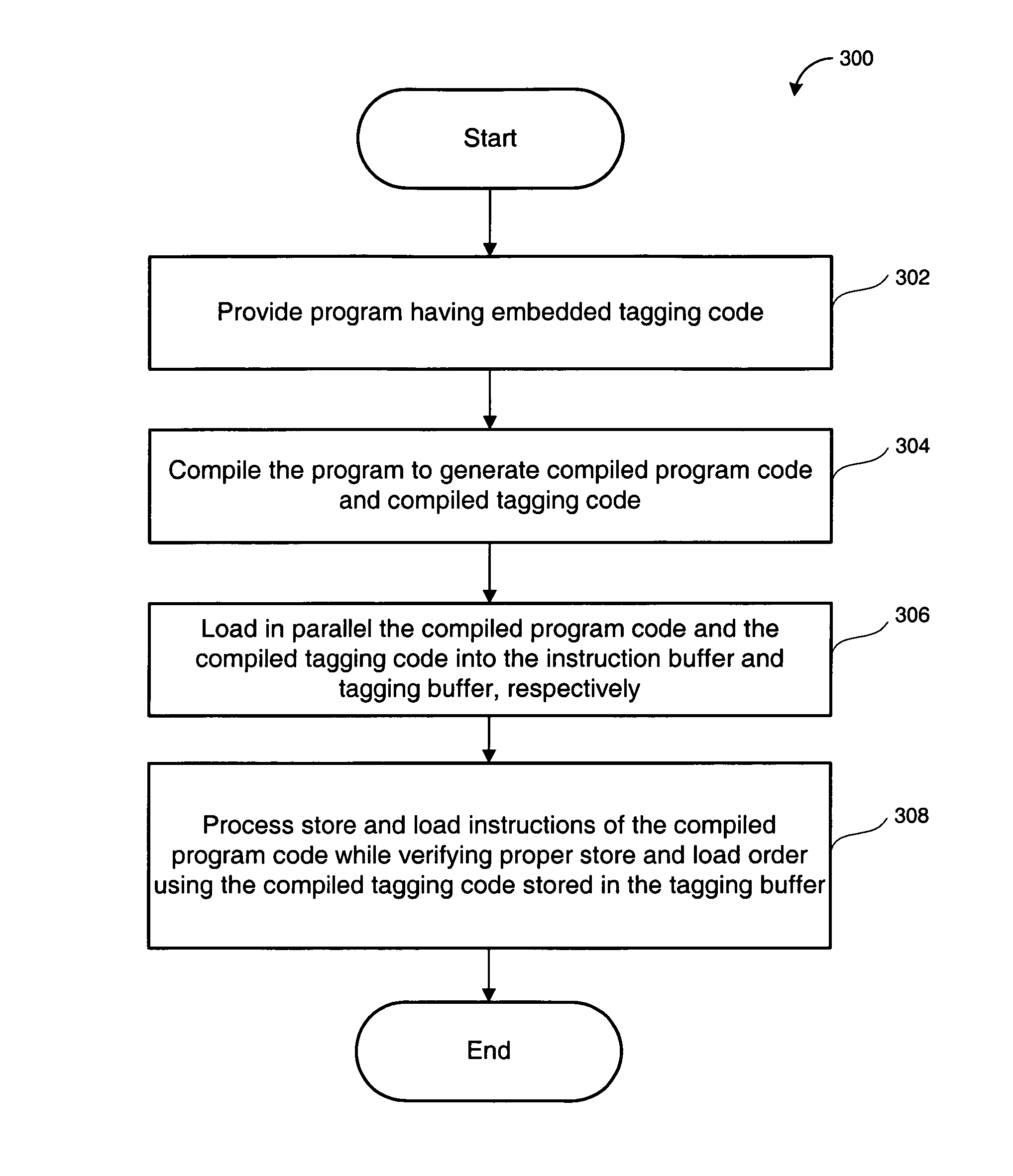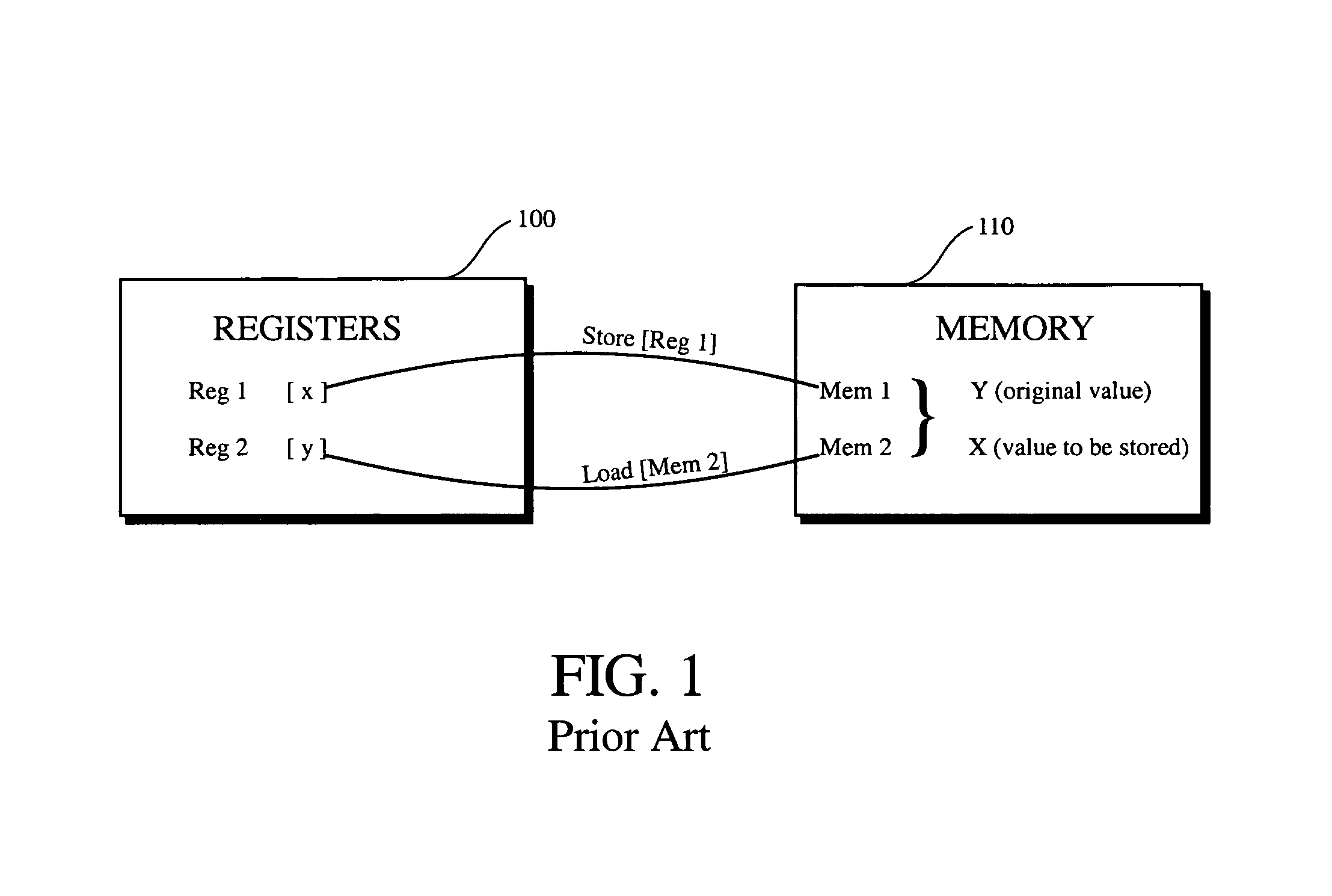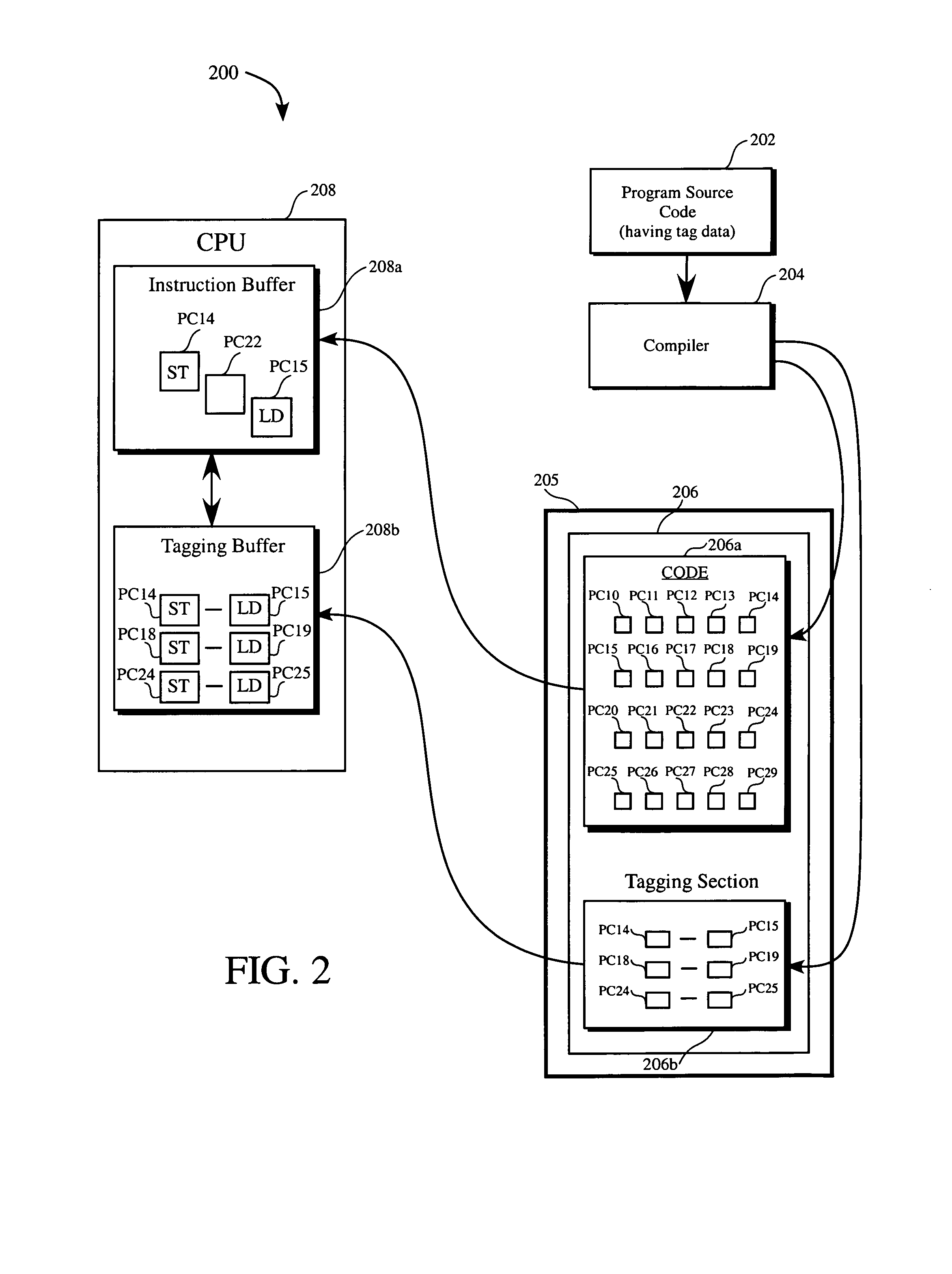Processor with tagging buffer and methods for avoiding memory collisions
- Summary
- Abstract
- Description
- Claims
- Application Information
AI Technical Summary
Benefits of technology
Problems solved by technology
Method used
Image
Examples
Embodiment Construction
[0017]Several exemplary embodiments of the invention will now be described in detail with reference to the accompanying drawings. FIG. 1 has been described above in the “Background of the Invention” section.
[0018]FIG. 2 is a schematic diagram 200 that illustrates the operation of a processor having a tagging buffer in accordance with one embodiment of the invention. As shown in FIG. 2, program source code 202 includes tag data for identifying program instruction pairs that refer to the same memory address. Compiler 204 compiles program source code 202 into machine executable code 206, which, as is well known to those skilled in the art, is in binary format. Machine executable code 206 is stored in memory 205, which may be any suitable memory, e.g. random access memory (RAM). Machine executable code 206 includes compiled program code 206a and compiled tagging code 206b. Compiled program code 206a includes a plurality of program counters (PCs), which are designated in FIG. 2 as PC 10,...
PUM
 Login to View More
Login to View More Abstract
Description
Claims
Application Information
 Login to View More
Login to View More - R&D Engineer
- R&D Manager
- IP Professional
- Industry Leading Data Capabilities
- Powerful AI technology
- Patent DNA Extraction
Browse by: Latest US Patents, China's latest patents, Technical Efficacy Thesaurus, Application Domain, Technology Topic, Popular Technical Reports.
© 2024 PatSnap. All rights reserved.Legal|Privacy policy|Modern Slavery Act Transparency Statement|Sitemap|About US| Contact US: help@patsnap.com










